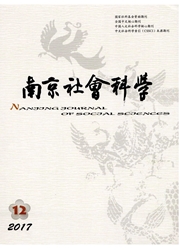

 中文摘要:
中文摘要:
交易费用测量包括微观和宏观两个层次,微观层次又分为市场型、管理型和政治型交易费用测量。宏观层次即是对一国(或地区)总量交易费用的测量。在总量交易费用测量上,沃利斯和诺思1986年提出的交易行业测量法具有一定的开创性。依据该方法测量总量交易费用会发现,经济越发达,总量交易费用占GNP的比重越大,而每笔交易的交易费用越低。反之则反是。这就提出一个问题,即:总量交易费用和每笔交易的交易费用是否就是这种反比关系?要搞清这二者的关系,关键是必须将"理论上的"和"测量到的"总量交易费用两个概念区分开。事实上,理论上的总量交易费用和每笔交易的交易费用并非反比关系。
 英文摘要:
英文摘要:
Measuring transaction costs include the measurement of micro and macro transaction costs,the former include market transaction costs,managerial transaction costs and political transaction costs,and the latter is the measuring of gross transaction costs in a country.In order to measuring the gross transaction costs,Wallis and North put forward a pioneered way in 1986,which is the measurement of the transaction sector in a country.It indicates that the share of gross transaction costs/GNP in developed country is bigger than in developing country and the transaction costs of every exchange in developed country is lower than in developing country.Is it a relationship of inverse ratio between gross transaction costs and transaction costs of every exchange? In order to understand it,we must differentiate the concept of the theoretical gross transaction costs and the measured gross transaction costs.
 同期刊论文项目
同期刊论文项目
 同项目期刊论文
同项目期刊论文
 期刊信息
期刊信息
